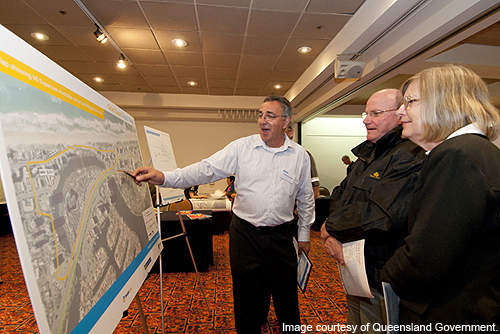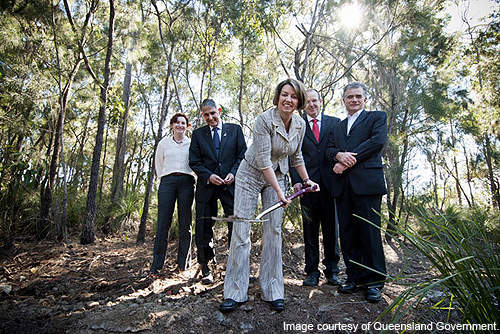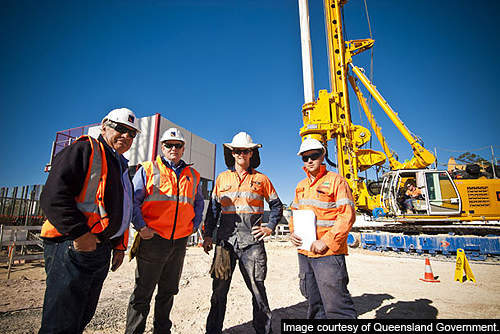The Gold Coast Rapid Transit system is a proposed 40km-long light rail system between Helensvale and Coolangatta in Gold Coast City, Australia. Approved in 2000, it is the first light rail network, as well as the largest infrastructure project, the city has ever seen.
Stage I of the project became operational in July 2014 and comprises a 13km-long light railroad between Gold Coast University Hospital and Broadbeach. GoldLinQ was awarded the Stage I design, build and operate contract in June 2011.
The estimated cost of Stage I was A$949m, which was financed by three governments. The Queensland government contributed A$464m towards the project, the Australian Government provided funding of up to A$365m with Gold Coast City Council committing A$120m. The project is called an ‘operator franchise’ as it was carried out under the public-private partnership.
Stage I helps approximately 40,000 workers to commute from the areas of Southport, Surfers Paradise and Broadbeach.
In addition, approximately 20% of the total population of Gold Coast plus up to 60,000 overnight visitors are also located within walking distance of the route.
The project results in 75,000 cars coming off the coastal strip and reducing greenhouse gas emissions by 1.14 million tonnes a year.
Background
The project was first proposed in 1996 by the Queensland government and Gold Coast City Council after recognising the need for a long-term solution to the growing population and increasing traffic congestion.
After identifying that light rail was the best option due to passenger comfort, safety, reliability and value for money, feasibility studies were carried out in 2001.
The project summary report was released in 2004 with consultation works carried between 2006 and 2008.
Infrastructure and construction
The $33m early works contract for Stage I was awarded to Leighton Contractors in the second quarter of 2010.
Stage I of Gold Coast Rapid Transit has 16 stations, including Loders Creek, Queen Street West, Gold Coast Hospital Southport, Southport Central, Southport South, Queensland, Narrowneck (Paradise Waters), Surfers North (Cypress Avenue), Surfers Central (Cavil Avenue), Surfers Paradise, Surfers South (Clifford Street), Northcliffe, Broadbeach North (Cascade Gardens), Broadbeach, Broadbeach Central (Convention Centre) and Broadbeach South (Hooker Boulevard).
Stage I was delivered in two phases. Phase I consisted of early and enabling works such as road widening, relocation of public utilities, reinstatement of driveways, fencing, car parks and construction of a station shell at the Gold Coast University Hospital.
Work on the Gold Coast University Hospital station started in August 2010 and was completed by July 2011. It was built in two phases in order to integrate the construction of $1.76bn Gold Coast University Hospital.
The station was built below ground level and features open sides and two platforms that provide access to Gold Coast University Hospital.
During Phase II, GoldLinQ was selected to build the stations, depots, bridges, supply vehicles and undertake all other operations to complete the project. It will also operate and maintain the system for 15 years.
Contractors
GoldLinQ is a consortium of McConnell Dowell Constructors, Bombardier Transportation Australia and KDR Gold Coast.
As part of the joint venture, MacDow was responsible for the track works, roadworks, bridges, station structures and buildings.
Bombardier Transportation supplied the rail systems including the light rail vehicles. KDR Gold Coast operates the light rail system.
Rolling stock
Stage I of Gold Coast rapid transit system is operated with 14 air-conditioned trams, each carrying 309 passengers. The trams operate every 7.5 minutes at peak times and use 750V DC overhead cabling to avoid power usage by other narrow gauge rails on the Gold Coast.
Future stages of the Gold Coast Rapid Transit project
The other potential future stages are Stage II that will be heading north from Gold Coast University Hospital along Olsen Avenue, to Harbour Town shopping centre to Helensvale rail station.
The Stage II light rail network is currently being considered, as the present road can accommodate medium traffic levels. Stage III will be heading in southern direction from Broadbeach to Burleigh Heads and Stage IV further south from Burleigh Heads to Coolangatta.
Stage 2 of the project is a 7.3km-long light rail route. Construction is expected to begin in April 2016 and the line is expected to be operational before 2018.
The Stage 2 route will start from Helensvale heavy rail station and will run alongside the Smith Street Motorway before reaching the Stage 1 at the Gold Coast University Hospital light rail station.
Stage 2 of Gold Coast Rapid Transit System will have three new stations located at Helensvale, Parkwood and Parkwood East.
The cost of Stage 2 will be funded by the City of Gold Coast ($55.1m) and the Commonwealth government ($95m).





